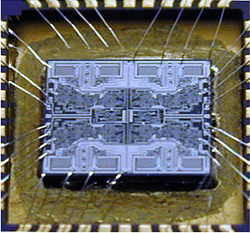 Break IC PIC16F648A Heximal
Break IC PIC16F648A Heximal
FLASH devices can be erased and re-programmed electrically which is a critical feature when Break IC PIC16F648A Heximal. This allows the same device to be used for prototype development, pilot programs and production.
A further advantage of the electrically erasable FLASH is that it can be erased and reprogrammed in-circuit, or by device programmers, such as Microchip’s PICSTART® Plus, or PRO MATE® II programmers.
The high performance of the PIC16F648A family can be attributed to a number of architectural features commonly found in RISC microprocessors. To begin with, the PIC16F648A uses a Harvard architecture, in which program and data are accessed from separate memories using separate busses.

Break IC PIC16F648A Heximal
This improves bandwidth over traditional von Neumann architecture where program and data are fetched from the same memory when Break IC PIC16F648A Heximal. Separating program and data memory further allows instructions to be sized differently than 8-bit wide data word. Instruction opcodes are 14-bits wide making it possible to have all single word instructions.
A 14-bit wide program memory access bus fetches a 14-bit instruction in a single cycle. A two-stage pipeline overlaps fetch and execution of instructions. Consequently, all instructions (35) execute in a single-cycle (200 ns @ 20 MHz) except for program branches.
(QTP) Devices Microchip offers a QTP Programming Service for factory production orders. This service is made available for users who chose not to program a medium to high quantity of units and whose code patterns have stabilized.
The devices are standard FLASH devices but with all program locations and configuration options already programmed by the factory. Certain code and prototype verification procedures apply before production shipments are available.
Microchip offers a unique programming service where a few user-defined locations in each device are programmed with different serial numbers. The serial numbers may be random, pseudo-random or sequential. Serial programming allows each device to have a unique number, which can serve as an entry-code, password or ID number.